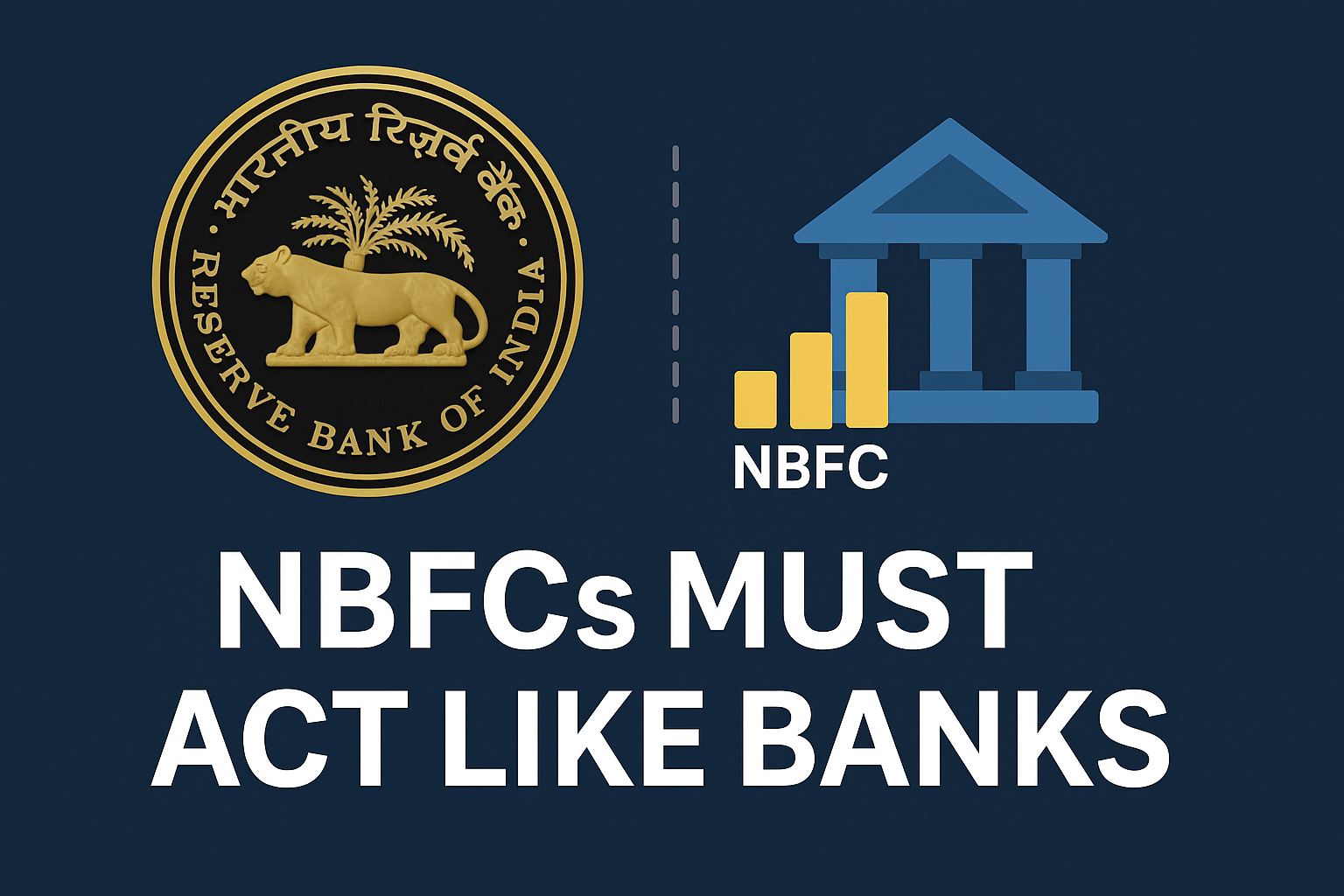Announcement: Lorem ipsum dolor sit amet, consectetur adipiscing elit. Donec et quam blandit odio sodales pharetra.
Large NBFCs must be subjected to regulation; exactly like banks
RBI Deputy Governor Rajeshwar Rao was in the news recently for suggesting in a speech that large NBFCs should be regulated in the same way as banks. In fact, Rao went a step ahead to suggest that NBFCs above certain threshold AUM should either convert to banks or they should shrink their balance sheets.

Table of Content
India has really large NBFCs
One of the lessons that India learnt in the Sahara case was that allowing any non-banking entity to collect deposits from the public is fraught with risks. Of course, scores of investors actually lost their money but it had then underlined the need to regulate large financial non-banks more stringently. In the last few years some of the financial companies have really grown by leaps and bounds. If you look at an HDFC, it has a market cap that puts it in the 10 most valuable companies in the Nifty. Then there are the likes of Bajaj Finance which has a tremendously strong retail franchise. Bajaj Finance, ironically, has a market cap that is much bigger than the market cap of Bajaj Auto. These NBFCs manage billions of dollars of AUM and move billions of dollars as loans and as deposits. In short, they are participating in the financial intermediation system in a big way without the accountability of a bank. That is what appears to worry the RBI, because obviously Rao was voicing the broader concerns of the RBI as a regulator of the Indian financial system.
Why should NBFCs have fun?
A banker in a PSU bank was recently heard complaining that NBFCs can do all that banks can do without a fraction of the accountability that banks are being subjected to. Other than checking and clearing accounts, NBFCs are virtually allowed to everything that a bank does. Even fund transfers now have a new dimension with the rise of UPI and other online modes of transfer. On the one hand, banks are subject to RBI reserve requirements, priority sector lending and capital adequacy norms. In addition, the banks are subject to RBI scrutiny almost at each and every stage. NBFCs, on the other hand, almost have a free run. Even the systemically important NBFCs are only regulated to a limited extent.
NBFCs must make the choice
Rao is on target when he suggests that large NBFCs should be subjected to the same level of scrutiny and regulation as the banks. Globally, there have been very large non-banking institutions like GE Capital, Fannie Mae and Freddie Mac and we all saw what happened to these very venerable institutions in 2008. India cannot afford to wait for another crisis to start regulating large NBFCs. When the first squeeze was imposed on NBFCs in 1998, the sector was much smaller. Today, most NBFCs are almost as large and as powerful as banks. It is only appropriate that they are also put under similar stringent regulations!
Comments